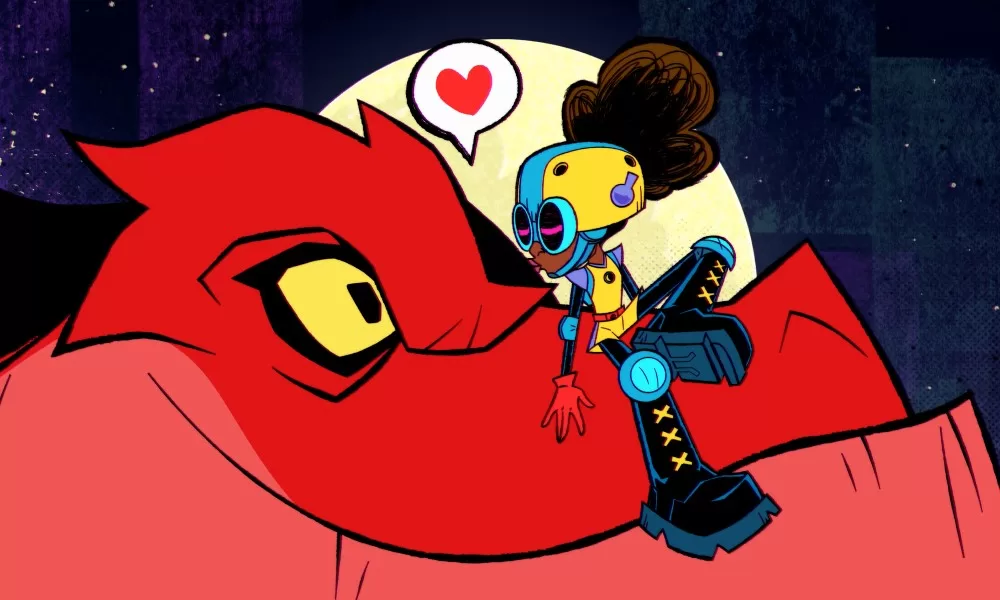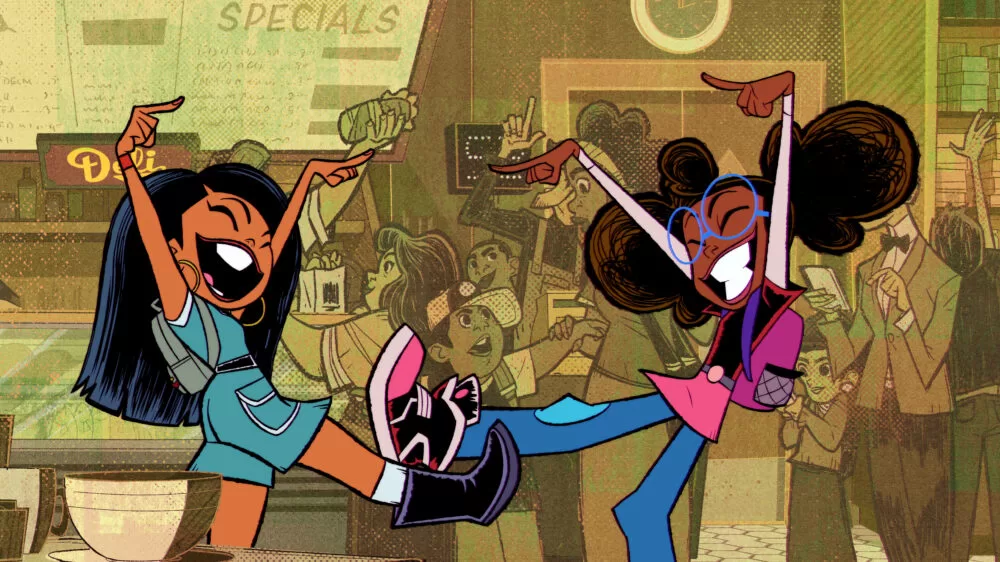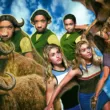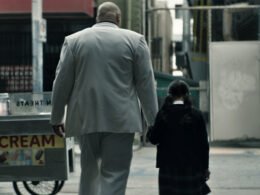From the moment the titular Moon Girl first skates onto the screen, it’s clear that Marvel’s Moon Girl and Devil Dinosaur is an animated series which, like Moon Girl herself, is unabashedly confident. Luckily, that confidence is not misplaced. Moon Girl is kinetic and charming; a vibrant and eager show that isn’t afraid to have fun.
Moon Girl is about family
Moon Girl tells the story of Lunella Lafayette (voiced by recording artist Diamond White), a 13-year-old genius growing up on the Lower East Side of Manhattan. Lunella’s been aged up a bit from the comics (she’s most often depicted as a 9-year-old), but she’s still very much a kid. She lives with her mother and father (Sasheer Zamata and Jermaine Fowler) and her grandparents (Alfre Woodard and Gary Anthony Williams). When superheroing gets to be too much for Lunella, her family is there to pick her back up—even if they don’t know about her side hustle as the LES’s resident superhero.
At her side is the other half of the title, Devil Dinosaur. Let’s just cut to the chase: Devil Dinosaur is adorable. He’s like a giant reptilian puppy who is easily distracted by hot dogs (who among us, amirite?), and is unshakably loyal to his new friend. The merch opportunities are strong in this one.

For Moon Girl, style is substance
At times, the art of this series feels inspired by Spider-Man: Into the Spider-Verse, with an animation style that is more interested in vibes than realism. Like Spider-Verse, the series leans in on its comic book source material—utilizing word bubbles, split frames, and action lines to its advantage. Character designs are reminiscent of the simple-but-memorable Rise of the Teenage Mutant Ninja Turtles. The colors pop and the lines make the series feel like a hand-drawn comic strip come to life.
New York City has never looked better than it does in Moon Girl. From the jump, Executive Producer Steve Loter and Supervising Director Rodney Clouden make sure the Lower East Side we see on the show is authentic, down to the street names. “Not only does that mean that it’s street accurate, like the streets and the buildings are actually accurate to the place that we’re portraying, we wanted to kind of maintain the vibe and sensibility of it,” Loter told Animation Magazine.

The gorgeous art is bolstered by truly fantastic music. Both the series’ score and original songs, including the theme song, all come from the mind of Rafael Saadiq. Mixing hip-hop, funk, and jazzy tones throughout each episode infuses the series with an energetic pulse that captures the busiest city in America through a child’s gaze. The show soars when the animation rises to meet Saadiq’s music, resulting in action sequences that act as animated music videos where colors go off the rails (in the best way possible) and skyscrapers become equalizer bars.
Lunella’s got some power in her corner
This show wouldn’t be possible without its series creator, Laurence Fishburne. That’s right, Morpheus himself is responsible for bringing Moon Girl to life. Fishburne is on record as a declared comic geek, and was drawn to the property during one of his weekly trips to his local shop. Fishburne and his production company, Cinema Gipsy Productions, went to Disney with the idea of bringing Lunella to the screen, and soon a joint deal was struck. Aside from being credited as the series’ creator and executive producer, Fishburne also lends his voice to the show as The Beyonder.
Diversity is on full display in Moon Girl and Devil Dinosaur
The art is amazing, and the villains are fun, but there is something more profound at the foundation of Moon Girl that elevates it past the normal fare of children’s animation. When Lunella skates through her Lower East Side community, great care is taken to depict New York’s unique brand of multiculturalism. This is a community where Ahmed’s Deli (halal, of course) is across the street from Bubbe Bina’s Knish Niche, where Black kids sit on stoops while an adult braids their hair, and where kids of all colors and creeds attend the same middle school.

The stories themselves are allegories for real issues facing people of color, such as gentrification and natural hair insecurity. This is what is meant by the mantra “representation is important.” There’s a version of Moon Girl where Lunella’s blackness would have been little more than an obligatory dressing for a blank slate character devoid of any cultural touchstones. Frankly, Marvel has dropped the ball in this arena once or twice before.
Thankfully, Marvel’s Moon Girl and Devil Dinosaur never loses sight of the fact that at the center of the universe they’ve so lovingly created, is a T-Rex-sized helping of Black girl magic.
Moon Girl and Devil Dinosaur premieres on Disney Channel on February 10, and Disney+ on February 15.











